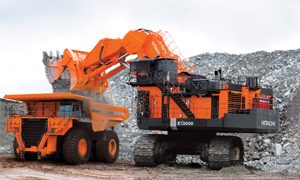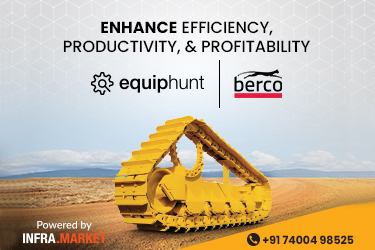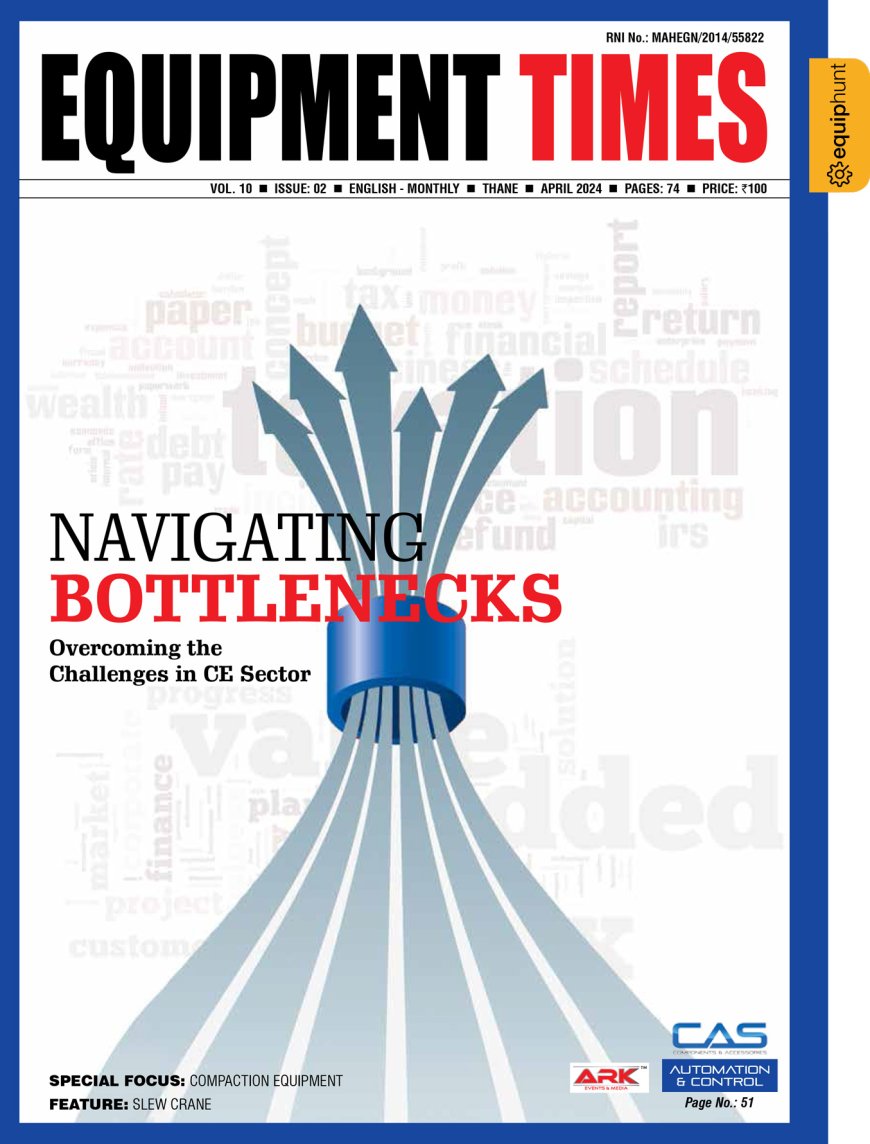Strong visibility for mining equipment for next 2 to 3 yrs.
Hemant Mathur, Assistant Vice President, Sales & Marketing, Tata Hitachi. Tata Hitachi’s dependency on imports has reduced with vendors establishing their manufacturing units in India. However, for certain categories of mining equipment, where the demand potential is not consistent Hemant

 Hemant Mathur,
Hemant Mathur,
Assistant Vice President,
Sales & Marketing,
Tata Hitachi.
Tata Hitachi’s dependency on imports has reduced with vendors establishing their manufacturing units in India. However, for certain categories of mining equipment, where the demand potential is not consistent Hemant Mathur, says, “We are still importing components with a commitment that a few of these will be indigenized with our inhouse manufacturing capabilities. In line with the “Make in India” initiative of the Government.”
The ban on mining in certain areas in India has had a serious impact on mining companies. How has it impacted the mining equipment companies in India and how do you see it change in coming quarters?
Tata Hitachi mainly supplies excavators from among the range of equipment that gets classified as mining equipment. We also supply large loaders and dumpers.
The equipment supplies get directly impacted by the ban on mining in the areas affected. Eg, ban on iron ore mining in Goa has brought the supply of equipment to a halt. From time to time government bans on stone quarrying, sand mining, and delays in mining in coal and iron due to policy/environment has a negative impact on the offtake.
Which segments have seen growth in the past and how do you see the scope for them and new segments in the future?
There has been a reasonable growth in the mining excavator segment, as these categories have a direct relation with mineral production.
The mining segment, driven by demand from both Public and Private sectors , is expected to grow in future leading to a healthy growth in the mining equipment space.
 Have investments in domestic manufacturing of mining equipment picked in India or we are still dependent on costly imported equipment and spares from abroad?
Have investments in domestic manufacturing of mining equipment picked in India or we are still dependent on costly imported equipment and spares from abroad?
There have been investments – both in terms of building capacity as well as enhancing engineering capability – for Tata Hitachi on mining equipment.
Our dependency on imports has reduced through indigenization of components that go into our equipment. This is due to enhancements in our own inhouse strengths in design and manufacturing, as well as those of our vendor partners, who now manufacture components to international quality. As an organization we are among the better placed firms to qualify for the “Make in India” initiative of the Government.
However, for certain categories of mining equipment, we are still importing machines and components.
What is the current demand supply scenario and how well positioned are you to cater to them?
We cater to the demand for mining equipment from our plant at Kharagpur which manufactures our higher capacity machines, including India’s largest manufactured hydraulic excavator EX1200V (120T class). The higher capacity excavators and dumpers are imported from Hitachi Construction Machinery Co. Japan.
There will be a good demand for mining equipment in the next 2-3 years and this expected to go up with major public sector undertakings investing in fleets of equipment of global standards and performance capability.We are geared up for this demand with our manufacturing capacity and have support facilities like repair workshops, warehouses etc. to ensure high equipment availability. For other categories of equipment, we depend on Hitachi to provide us with state of art equipment for supply in India.
Tata Hitachi now has a large team of highly trained manpower and infrastructure, and also evolved customer engagement models, to support these equipment in India.
What are the new launches that we have seen in the company and in which segments?
Hitachi Construction Machinery, Japan announced the merger of KCM Corporation, Japan from 1st April 2019.
This allowed us to get entry to the Mining Wheel Loaders segment. The models – Hitachi ZW310-5A, ZW550-1 and ZW370-1- which have payload ranging from 6.5 to 11ton class have been formally introduced to Indian mining market. These are imported models to cater to mining, port, slag handling and block handling applications.
How are the after-sales service facilities for these products? Are customers better off buying or leasing these products?
Tata Hitachi has been a pioneer in providing the best in class after sale and service facilities. Skilled and well-trained engineers from Hitachi Construction Machinery, Japan assist on all type of periodic maintenance, scheduled maintenance, troubleshooting etc to ensure maximum uptime of the machines.
We offer Full Maintenance Contracts, Annual Maintenance Contracts, Site Support Agreements etc. to enhance the durability and reliability of machines. We have established a benchmark in India with one of our hydraulic excavators – EX2500 – which has clocked 85000hrs of operation and is still working. Our workshops have a high quality of precision equipment to enhance life of recon components.
Leasing option is still at a nascent stage in India and we expect that this will grow. However, today, customers choose to buy the machines rather than lease them.
How prepared are you for the new Euro VI emission norms that are going to be effective from April 1, 2020?
Tata Hitachi mining equipment’s’ are fitted with engines which were already complying to EPA Tier II emissions norms. These have been working in India for over a decade and have established benchmarks of performance. Hence, with an experience of Tier II emission norms, our R&D team along with the Hitachi team, and our vendors, has been working towards emission compliances and we will be ready on time.
What will be the impact of these norms on pricing and rental of your machines in coming future?
It is expected that the prices would go up post these norms being implemented, as this will need modification of the engine fuel system. However, this is true for everyone who is into this business.
Rentals to an extent are directly related to the competitiveness of the contracts in the market. Hence it will be difficult to comment on how the norms will have an impact on rentals.
What are your investment plans for India in FY20 and FY21?
The construction equipment market is currently not faring too well this year and hence we need to wait and watch before committing.
The demand for skilled workforce is going to increase in leap and bounds in coming years in the construction and mining equipment space. How prepared are you to handle the situation, and what is your company doing to train and prepare skilled workforce for yourself and the industry?
Tata Hitachi understands the need of trained and skilled operators to operate high value equipments. We conduct training programs for maintenance staff and engineers customized as per ‘their requirements.
Additionally, there are standard training programs organized throughout the year for which the schedules are shared with the customers. For equipment operators, there are two type of training programs: Hands on training on equipment. Training on Simulator. Training on Simulator
We have setup a simulator-based training facility for operators at the Dharwad and Kharagpur Training Centers. These offer the latest in simulator training.
There are two courses offered for Simulator training – Excavator Module Dump Truck Module. Training on Equipment. Dharwad and Kharagpur have two training centers where operators are trained on machines.
Both the training centers impart operating and servicing to unemployed youth to enhance their employability as operators for the construction equipment industry. The training centers have multiple classrooms supported by electronic and visual aids in addition to machines for practical sessions for imparting world-class training. The program includes theory on equipment, practical and hands on training for aggregates.
Hits: 48














